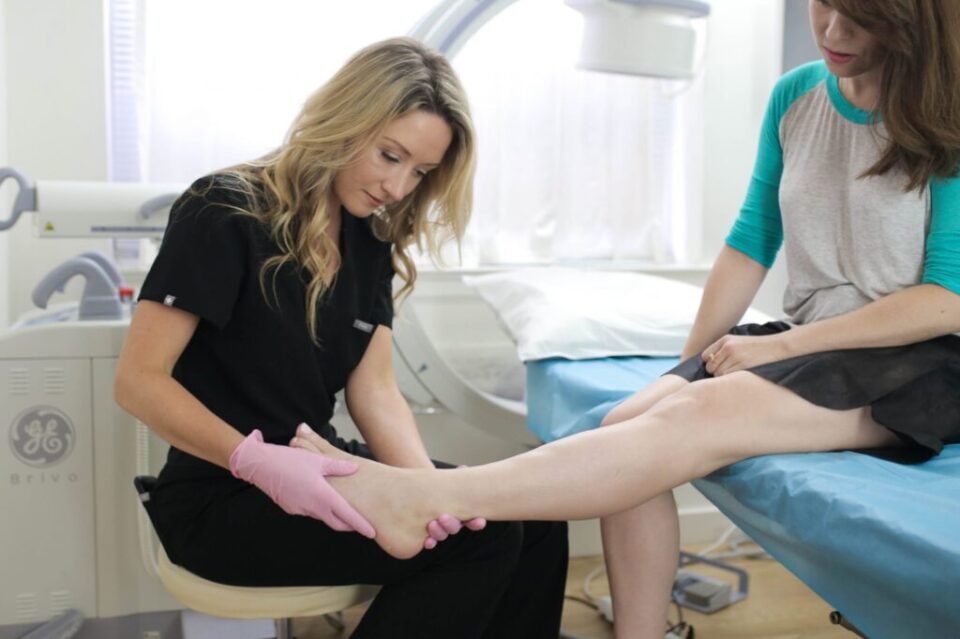Varicose veins, a common vascular condition affecting millions, can not only be a cosmetic concern but also lead to discomfort and health issues. For individuals considering varicose vein treatments, a crucial question often arises: “Are Varicose Vein Treatments Covered by Insurance?” In this comprehensive guide, we explore the advantages and intricacies of insurance coverage for varicose vein treatments.
Table of Contents
Relieving Pain and Discomfort
Varicose veins can cause pain, swelling, and discomfort, impacting an individual’s quality of life. Fortunately, various treatment options are available to alleviate these symptoms. One significant advantage of seeking treatment is the potential relief from pain and discomfort associated with varicose veins.
When considering insurance coverage, many policies recognize the medical necessity of addressing pain and discomfort caused by varicose veins. Procedures such as endovenous laser treatment (EVLT) and radiofrequency ablation (RFA) are often deemed medically necessary, increasing the likelihood of insurance coverage.
Preventing Complications and Health Risks
Varicose veins are not merely a cosmetic concern; they can lead to more severe health complications if left untreated. Conditions such as venous ulcers and blood clots can arise, posing a risk to an individual’s overall health. Seeking varicose vein treatments not only addresses the visible signs but also prevents potential health risks.
Insurance providers recognize the importance of preventing complications, and in many cases, they cover treatments aimed at reducing the risk of such issues. Procedures like sclerotherapy and ambulatory phlebectomy, designed to treat varicose veins and minimize complications, may be covered under insurance plans.
Improving Quality of Life
Living with varicose veins can impact one’s overall well-being and self-esteem. Individuals often find their confidence affected due to the visible appearance of varicose veins, leading to limitations in daily activities. Varicose vein treatments not only address the physical symptoms but also contribute to an improved quality of life.
In certain instances, insurance coverage may extend to procedures with both medical and cosmetic benefits. While policies vary, some providers recognize the psychological impact of varicose veins and may cover treatments that enhance an individual’s overall well-being.
Understanding Insurance Coverage for Varicose Vein Treatments
While the advantages of varicose vein treatments are evident, navigating insurance coverage can be complex. Insurance policies vary widely, and determining coverage for specific treatments requires careful consideration of policy details. Here are key factors to understand regarding insurance coverage for varicose vein treatments:
Coverage Criteria:
Insurance providers often establish specific criteria for coverage of varicose vein treatments. These criteria may include the severity of symptoms, failed conservative measures, and documented medical necessity. Understanding the insurer’s criteria is crucial in determining eligibility for coverage.
Pre-Authorization and Documentation:
Many insurance plans require pre-authorization for certain medical procedures. It is essential to work closely with healthcare providers to ensure all necessary documentation, including medical records and diagnostic imaging, is submitted for approval. Proactively addressing these requirements enhances the likelihood of insurance coverage.
In-Network Providers:
Insurance coverage may be influenced by whether the healthcare provider is in-network or out-of-network. Choosing an in-network provider often increases the chances of coverage, as these providers have established agreements with the insurance company. Before undergoing varicose vein treatments, it is advisable to confirm the provider’s network status.
Alternative Treatments and Coverage:
Some insurance plans may cover specific varicose vein treatments while excluding others. Understanding the coverage for alternative treatments is crucial. For instance, while compression therapy may be covered by some policies, more invasive procedures like laser therapy may have different coverage terms.
Appealing Coverage Denials:
In cases where insurance coverage is denied, individuals have the right to appeal the decision. A well-documented appeal, supported by medical evidence and justification for the necessity of the procedure, can sometimes overturn initial denials. Understanding the appeal process is vital for those facing coverage challenges.
Conclusion:
In the pursuit of healthier and more comfortable lives, individuals with varicose veins often consider medical interventions. The question, “Are Varicose Vein Treatments Covered by Insurance?” is central to this decision-making process. The advantages of relief from pain, prevention of complications, and improved quality of life underscore the importance of seeking treatment.
Understanding the intricacies of insurance coverage is equally vital. From coverage criteria to pre-authorization requirements, individuals must navigate the complex landscape of insurance policies. While the road to coverage may have challenges, the potential benefits for physical and mental well-being make it a journey worth undertaking.
In conclusion, addressing varicose veins involves not only medical considerations but also an understanding of insurance dynamics. By actively engaging with healthcare providers, thoroughly reviewing insurance policies, and advocating for coverage when necessary, individuals can embark on a path towards healthier, more comfortable lives with the support of insurance coverage for varicose vein treatments.

